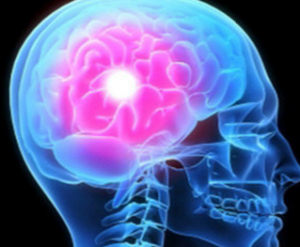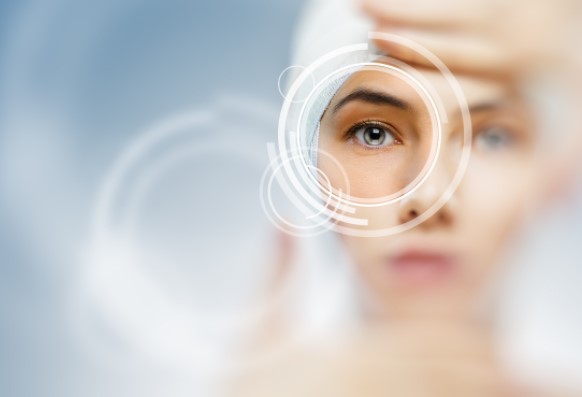 Routine hypnotherapy, like meditation, offers many life-enhancing benefits. My clients are advised to listen to their office hypnotherapy sessions daily for 3 months. Its the repetition that ensures sustainable relief from whatever problem they pursued hypnotherapy to fix.
Routine hypnotherapy, like meditation, offers many life-enhancing benefits. My clients are advised to listen to their office hypnotherapy sessions daily for 3 months. Its the repetition that ensures sustainable relief from whatever problem they pursued hypnotherapy to fix.
1 Sound Sleep: Hypnosis can improve your sleep quality, ensuring that you are well-rested and have the energy needed to pursue your goals effectively.
2 Enhanced Confidence: Hypnosis can boost your self-esteem and confidence, making you more likely to take the necessary steps toward achieving your goals.
3 Improve Visualization Skills: Hypnosis often involves visualization techniques, which can help you create a clear mental picture of your goals and the steps needed to achieve them.
4 Consistency and Discipline: By making hypnosis a daily habit, you can develop greater consistency and discipline, which are crucial for long-term success.
5 Healthy Habits: Hypnosis can help reprogram your subconscious mind to adopt healthier habits and behaviors that support your goals, such as eating healthier, exercising regularly, or staying organized.
6 Less Stress: Regular hypnosis sessions can lower stress and anxiety levels, allowing you to approach your goals with a calm and clear mind.
7 Optimize Motivation: Hypnosis can enhance your motivation by reinforcing your desire to achieve your goals and reminding you of the benefits of reaching them.
8 Pain Relief: If physical pain or discomfort is a barrier to your success, hypnosis can help manage and reduce pain, allowing you to focus better on your goals.
9 Positive Attitude: Regular hypnosis sessions can help cultivate a positive mindset, which is essential for overcoming challenges and staying persistent.
10 Improved Focus: Hypnosis can help you improve your ability to focus and concentrate, which is crucial for staying on track with your goals.
by: Paul Gustafson

 1 Ancient Roots: The use of hypnotic-like techniques can be traced back to ancient civilizations. The Greeks, Egyptians, and Hindus had early forms of what we now recognize as hypnotherapy.
1 Ancient Roots: The use of hypnotic-like techniques can be traced back to ancient civilizations. The Greeks, Egyptians, and Hindus had early forms of what we now recognize as hypnotherapy.
2 19th Century Development: Hypnotherapy as a formal therapeutic practice gained popularity in the 19th century, thanks to figures like James Braid, who coined the term “hypnosis” and emphasized its use for therapeutic purposes.
3 Not Mind Control: Contrary to common misconceptions, hypnotherapy does not involve mind control. Individuals under hypnosis are in a state of heightened focus and concentration, but they still have control over their thoughts and actions.
4 Individual Responses Vary: People respond to hypnotherapy differently. Some individuals are highly responsive and can enter a deep trance easily, while others may only experience a light trance or may not be as responsive.
5 Clinical Applications: Hypnotherapy is used in various clinical applications, including pain management, stress reduction, anxiety treatment, weight loss, and smoking cessation. It is also used in the treatment of phobias and post-traumatic stress disorder (PTSD).
6 Brain Activity Changes: Studies using neuroimaging techniques like MRI have shown that hypnosis can lead to changes in brain activity. It often involves alterations in the anterior cingulate cortex, thalamus, and default mode network.
7 State of Relaxation: Hypnotherapy induces a deep state of relaxation, which can be beneficial for both mental and physical well-being. The relaxation response can help reduce stress and promote a sense of calm.
8 Positive Suggestion: Hypnotherapy often involves the use of positive suggestions to influence behavior or thought patterns. These suggestions are tailored to help individuals overcome challenges, break habits, or achieve specific goals.
9 Complementary Treatment: Hypnotherapy is sometimes used as a complementary treatment alongside traditional medical approaches. It can be integrated into a comprehensive treatment plan for conditions like chronic pain, irritable bowel syndrome (IBS), and insomnia.
10 Ethical Standards: Professional hypnotherapists adhere to ethical standards and guidelines. They prioritize the well-being and autonomy of their clients and ensure that the therapeutic process is conducted with respect and consent.
 When you think about hypnosis, what do you visualize? For many, it’s a clock-swinging magician or a comedy act that forces an unwitting volunteer to make embarrassing public admissions on stage.
When you think about hypnosis, what do you visualize? For many, it’s a clock-swinging magician or a comedy act that forces an unwitting volunteer to make embarrassing public admissions on stage.
But hypnosis has a surprisingly robust scientific framework. Clinical research has shown that it can help relieve pain and anxiety and aid smoking cessation, weight loss, and sleep.
It can help children and adolescents better regulate their feelings and behaviors. Some people can even use “self-hypnosis” to manage stress, cope with life’s challenges, and improve their physical and emotional health.
Hypnosis creates “a non-judgmental immersive experience,” says Dr. David Spiegel, a Stanford University psychiatrist and leading researcher of hypnosis.
It’s been used in various forms for centuries, but it wasn’t until 1843 that the Scottish surgeon Dr. James Braid popularized the term “hypnosis.
” Braid’s central discovery—that concentration can guide the brain toward a more suggestible state—was and remains controversial. But physicians have continued to test and teach the technique over the centuries with great success, Spiegel says.
Today, a psychologist, psychiatrist, or other healthcare professional certified in hypnotherapy will first screen a potential client for their ability to be hypnotized using a validated suggestibility scale. (Not everyone is equally susceptible to hypnosis, but research has found that about two-thirds of adults are.)
The hypnotherapist will talk with them about what sort of sensory experiences make them feel safe, like a lakeshore retreat or a beach vacation.
 Then, the hypnotherapist will conjure that imagery—focusing, for example, on the salt spray of the ocean, seagulls calling overhead, and sun-kissed skin—to help the person go deeper into the calming visualization. If done right, the patient’s physical surroundings will melt away.
Then, the hypnotherapist will conjure that imagery—focusing, for example, on the salt spray of the ocean, seagulls calling overhead, and sun-kissed skin—to help the person go deeper into the calming visualization. If done right, the patient’s physical surroundings will melt away.
The result is a powerful combination of dissociation, immersion, and openness to new experiences, which culminates in what was once called a “trance,” but which modern hypnotherapists simply refer to as a “hypnotic state.” It can be achieved in just a few minutes, Spiegel says.
Such scene-setting techniques can create the ideal stage for positive transformation, says Binghamton University psychology professor Steven Jay Lynn. During hypnosis, people are more open to the suggestions of the hypnotherapist, whether those ask the patient to detach themselves from a past painful experience or visualize a solution to their problem.
For some people, these changes may be catalyzed in a one- or two-hour session. For others, hypnotherapy or self-hypnosis may be a regular part of their mental health care. “Hypnosis can modify consciousness in many ways,” Lynn says.
This state of deep relaxation isn’t particularly difficult for most people to dive into or emerge from. It’s similar to a “flow state,” Spiegel says, or an altered state of consciousness in which a person is so immersed in a given activity, their focus narrows and their sense of time shifts.
It’s also reminiscent of what happens during meditation, except instead of training people to tune into the present moment, hypnosis makes them more receptive to suggestion. Like meditation practice, many people are capable of doing hypnosis on their own, Spiegel says. In 2020, he co-founded Reveri, a subscription-based self-hypnosis app that’s structured a lot like Calm or Headspace.
A user can access recordings that guide them into a hypnotized state, after which they’re given suggestions or statements that lead them toward a goal the person selects before the session. “We do it all the time,” Spiegel says of entering and exiting these mental states, “but in hypnosis you do it more.”
Brain-imaging studies have helped to illuminate what happens inside the hypnotized brain, though much still remains a mystery. During hypnosis, activity in a brain region that helps people switch between tasks quiets down, Spiegel says.
This same region seems to disconnect from another area responsible for self-reflection and daydreaming—which may be why hypnotized people aren’t worried about who they are or what they’re doing.
Researchers have also found that hypnosis can calm brain regions that help control autonomic functions like heart rate, blood flow, and breathing. This is likely what leads to the physical relaxation that’s a hallmark of hypnosis, Spiegel says.
One of the most interesting modern applications of hypnosis is in the operating room, says Lorenzo Cohen, director of the Integrative Medicine Program at the University of Texas MD Anderson Cancer Center. For some localized breast cancer surgeries, namely lumpectomies, the center lets patients choose between general anesthesia or a localized anesthetic and hypnotherapy.
Those who choose the second option remain fully awake during their surgery, but a hypnotherapist first helps them enter a state of deep relaxation, or “hypnosedation,” Cohen says. “The local [anesthesia] should be doing its thing,” Cohen says. “The rest is in your head.”
More than 30 clinical trials have affirmed the use of hypnosedation, says Cohen (who is also researching the practice).
Studies have shown that people who received hypno-sedation experienced less preoperative anxiety, required less pain medication during surgery, and reported less post-operative pain intensity, nausea, fatigue, and discomfort than people who chose general anesthesia, Cohen says.
“The hypothesis is that the patients who are under general anesthesia, even though they’re not conscious, are having an intense stress response,” he says.
This can suppress an immune system that, in cancer patients, is already compromised by the disease and its treatments. When patients choose hypnosis, Cohen believes the body’s fight-or-flight response may be reduced.
Despite the mounting evidence, hypnosis is not without skeptics. Randomized controlled trials have found that hypnosis can help with pain and anxiety associated with a range of medical conditions, but even the best studies can’t meet the gold-standard of a double-blind design, Spiegel says.
 While patients and practitioners can be kept in the dark about what pill they’re administering or receiving, it’s almost impossible to design a study where neither side knows hypnosis is being delivered, he adds.
While patients and practitioners can be kept in the dark about what pill they’re administering or receiving, it’s almost impossible to design a study where neither side knows hypnosis is being delivered, he adds.
And historically, the power of hypnosis hasn’t always been wielded responsibly. The imaginative potential of hypnosis has been shown to create false memories—sometimes with devastating effects. At least 27 states ban hypnotically-elicited testimony from appearing in court. Hypnotherapists should avoid using the technique to “recover” memories, Lynn says.
But when conducted by a trained professional and properly applied, modern hypnotherapy can provide powerful results. Susceptibility to suggestion is often “viewed as a liability or a weakness,” Spiegel says, “but it’s really a strength.”
by: Eleanor Cummings

 Among the wide array of alternative therapies, hypnotherapy has long been an interesting option for those seeking unconventional solutions to various issues like stress, anxiety, and habit breaking. In addition to the usual mainstream hypnotherapy options there are several applications of this meditative modality that extend beyond the conventional, delving into uncharted territories of inner thought.
Among the wide array of alternative therapies, hypnotherapy has long been an interesting option for those seeking unconventional solutions to various issues like stress, anxiety, and habit breaking. In addition to the usual mainstream hypnotherapy options there are several applications of this meditative modality that extend beyond the conventional, delving into uncharted territories of inner thought.
Quantum Hypnotherapy
Picture a form of hypnotherapy that ventures into the quantum realm, blurring the lines between science and spirituality. Quantum hypnotherapy suggests that our consciousness is intricately linked with the universe’s fabric. Practitioners guide individuals through profoundly deep hypnotic journeys, uncovering the potential for healing and self-discovery at the quantum level.
Hypnotic Regression to Parallel Realities
Traditional regression hypnotherapy is typically a journey to past experiences, but what if we could explore not just our own past, but parallel  realities? Some practitioners guide individuals into hypnotic states offering access to memories from alternate timelines. This unconventional approach invites a captivating exploration within the depths of the hypnotic mind.
realities? Some practitioners guide individuals into hypnotic states offering access to memories from alternate timelines. This unconventional approach invites a captivating exploration within the depths of the hypnotic mind.
Dream Integration Hypnotherapy
Dreams are considered windows to the subconscious, and dream integration hypnotherapy takes this notion to new heights. This approach guides individuals into a hypnotic state where they actively interact with and influence the content of their dreams. By subconsciously navigating the dream realm, individuals gain insights into their deepest fears, desires, and unresolved issues.
Hypnotherapy and Virtual Reality
In this age of advanced technology, some hypnotherapists incorporate virtual reality (VR) into their practice. This innovative approach creates immersive and personalized hypnotic experiences within virtual environments. Whether overcoming phobias or addressing trauma, the fusion of hypnotherapy and VR provides a unique and powerful avenue for therapeutic exploration.
Metaphysical Hypnotherapy
Metaphysical hypnotherapy goes beyond the conventional mind-body connection, exploring intricate relationships between the mind, spirit, and the unseen energies around us. Practitioners may guide individuals to connect with spirit guides, explore past lives, or tap into higher states of consciousness for profound healing and self-awareness.
Conclusion
These fascinating applications may stretch the boundaries of traditional hypnotherapy, yet they underscore the evolving nature of alternative therapies. As individuals continue to seek unconventional paths for personal growth and healing, hypnotherapy emerges as an effective gateway into the uncharted realms of the inner mind.
by P Gustafson

 Hypnosis has long been used to treat and manage a host of psychiatric and neurologic symptoms. However, not all patients respond equally to this therapy type. About two thirds of the general adult population are estimated to be at least somewhat hypnotizable, and 15% are highly hypnotizable.
Hypnosis has long been used to treat and manage a host of psychiatric and neurologic symptoms. However, not all patients respond equally to this therapy type. About two thirds of the general adult population are estimated to be at least somewhat hypnotizable, and 15% are highly hypnotizable.
Through brain imaging, the Stanford team found that high hypnotizability is associated with greater functional connectivity between the left dorsolateral prefrontal cortex (DLPFC) and the dorsal anterior cingulate cortex.
“A novel aspect of this trial is that we used the person’s own brain networks, based on brain imaging, to target the right spot,” Co-senior author Nolan Williams, MD, with Stanford University, California, said in a news release.
The team chose patients with chronic pain because hypnosis has been shown to be a “highly effective analgesic that has a far better risk/benefit ratio than widely overutilized opioids that have serious fatal overdose potential,” Spiegel told Medscape Medical News.
The pre-to-post SHIFT change in hypnotic induction profile scores, a standardized measure of hypnotizability, was significantly greater in the active vs sham group after just 92 seconds of stimulation (P = .046).
Only the active SHIFT group showed a significant increase in hypnotizability following stimulation, an effect that lasted for about 1 hour.
“Increasing hypnotizability in people who are low-to-medium hypnotizable individuals could improve both the efficacy and effectiveness of therapeutic hypnosis as a clinical intervention,” the researchers wrote.
They note that because this was a “mechanistic study,” it did not explore the impact of increased hypnotizability on disease symptoms. They also note that further studies are needed to assess the dose-response relationships of SHIFT.

Transformative Research
“This line of research is fascinating,” Shaheen Lakhan, MD, PhD, neurologist, and researcher in Boston, told Medscape Medical News.
“We are nearing an era of personalized, noninvasive brain modulation. The ability to individually modulate the DLPFC opens new possibilities for brain health beyond hypnotizability for fibromyalgia,” said Lakhan, who wasn’t involved in the study.
“The DLPFC is involved in executive functions (and disorders) like attention (ADHD), emotional regulation (depression), motivation (schizophrenia), and impulse control (addiction),” he noted.
“Soon we may no longer need large expensive devices like transcranial magnetic stimulators as in this research study. Smartphones could deliver tailored digital therapeutics by engaging specific brain circuits,” Lakhan predicted.
“Imagine using an app to receive treatment customized to your unique brain and needs — all without anything implanted and delivered anywhere. The potential to precisely modulate the brain’s wiring to enhance cognition and mental health, without surgery or physical constraints, is incredibly promising. The possibilities are intriguing and could truly transform how we address brain diseases,” he added.
The study was supported by a grant from the National Center for Complementary and Integrative Health (NCCIH), part of the National Institutes of Health (NIH). Williams is a named inventor on Stanford-owned intellectual property relating to accelerated TMS pulse pattern sequences and neuroimaging-based TMS targeting; has served on scientific advisory boards for Otsuka, NeuraWell, Magnus Medical, and Nooma as a paid advisor; and holds equity/stock options in Magnus Medical, NeuraWell, and Nooma. Spiegel is a cofounder of Reveri Health, Inc., an interactive hypnosis app (not utilized in the current study).
 Routine hypnotherapy, like meditation, offers many life-enhancing benefits. My clients are advised to listen to their office hypnotherapy sessions daily for 3 months. Its the repetition that ensures sustainable relief from whatever problem they pursued hypnotherapy to fix.
Routine hypnotherapy, like meditation, offers many life-enhancing benefits. My clients are advised to listen to their office hypnotherapy sessions daily for 3 months. Its the repetition that ensures sustainable relief from whatever problem they pursued hypnotherapy to fix.
 1 Ancient Roots: The use of hypnotic-like techniques can be traced back to ancient civilizations. The Greeks, Egyptians, and Hindus had early forms of what we now recognize as hypnotherapy.
1 Ancient Roots: The use of hypnotic-like techniques can be traced back to ancient civilizations. The Greeks, Egyptians, and Hindus had early forms of what we now recognize as hypnotherapy. When you think about hypnosis, what do you visualize? For many, it’s a clock-swinging magician or a comedy act that forces an unwitting volunteer to make embarrassing public admissions on stage.
When you think about hypnosis, what do you visualize? For many, it’s a clock-swinging magician or a comedy act that forces an unwitting volunteer to make embarrassing public admissions on stage. Then, the hypnotherapist will conjure that imagery—focusing, for example, on the salt spray of the ocean, seagulls calling overhead, and sun-kissed skin—to help the person go deeper into the calming visualization. If done right, the patient’s physical surroundings will melt away.
Then, the hypnotherapist will conjure that imagery—focusing, for example, on the salt spray of the ocean, seagulls calling overhead, and sun-kissed skin—to help the person go deeper into the calming visualization. If done right, the patient’s physical surroundings will melt away.
 While patients and practitioners can be kept in the dark about what pill they’re administering or receiving, it’s almost impossible to design a study where neither side knows hypnosis is being delivered, he adds.
While patients and practitioners can be kept in the dark about what pill they’re administering or receiving, it’s almost impossible to design a study where neither side knows hypnosis is being delivered, he adds.
 Among the wide array of alternative therapies, hypnotherapy has long been an interesting option for those seeking unconventional solutions to various issues like stress, anxiety, and habit breaking. In addition to the usual mainstream hypnotherapy options there are several applications of this meditative modality that extend beyond the conventional, delving into uncharted territories of inner thought.
Among the wide array of alternative therapies, hypnotherapy has long been an interesting option for those seeking unconventional solutions to various issues like stress, anxiety, and habit breaking. In addition to the usual mainstream hypnotherapy options there are several applications of this meditative modality that extend beyond the conventional, delving into uncharted territories of inner thought. realities? Some practitioners guide individuals into hypnotic states offering access to memories from alternate timelines. This unconventional approach invites a captivating exploration within the depths of the hypnotic mind.
realities? Some practitioners guide individuals into hypnotic states offering access to memories from alternate timelines. This unconventional approach invites a captivating exploration within the depths of the hypnotic mind.

 Hypnosis has long been used to treat and manage a host of psychiatric and neurologic symptoms. However, not all patients respond equally to this therapy type. About two thirds of the general adult population are estimated to be at least somewhat hypnotizable, and 15% are highly hypnotizable.
Hypnosis has long been used to treat and manage a host of psychiatric and neurologic symptoms. However, not all patients respond equally to this therapy type. About two thirds of the general adult population are estimated to be at least somewhat hypnotizable, and 15% are highly hypnotizable.








